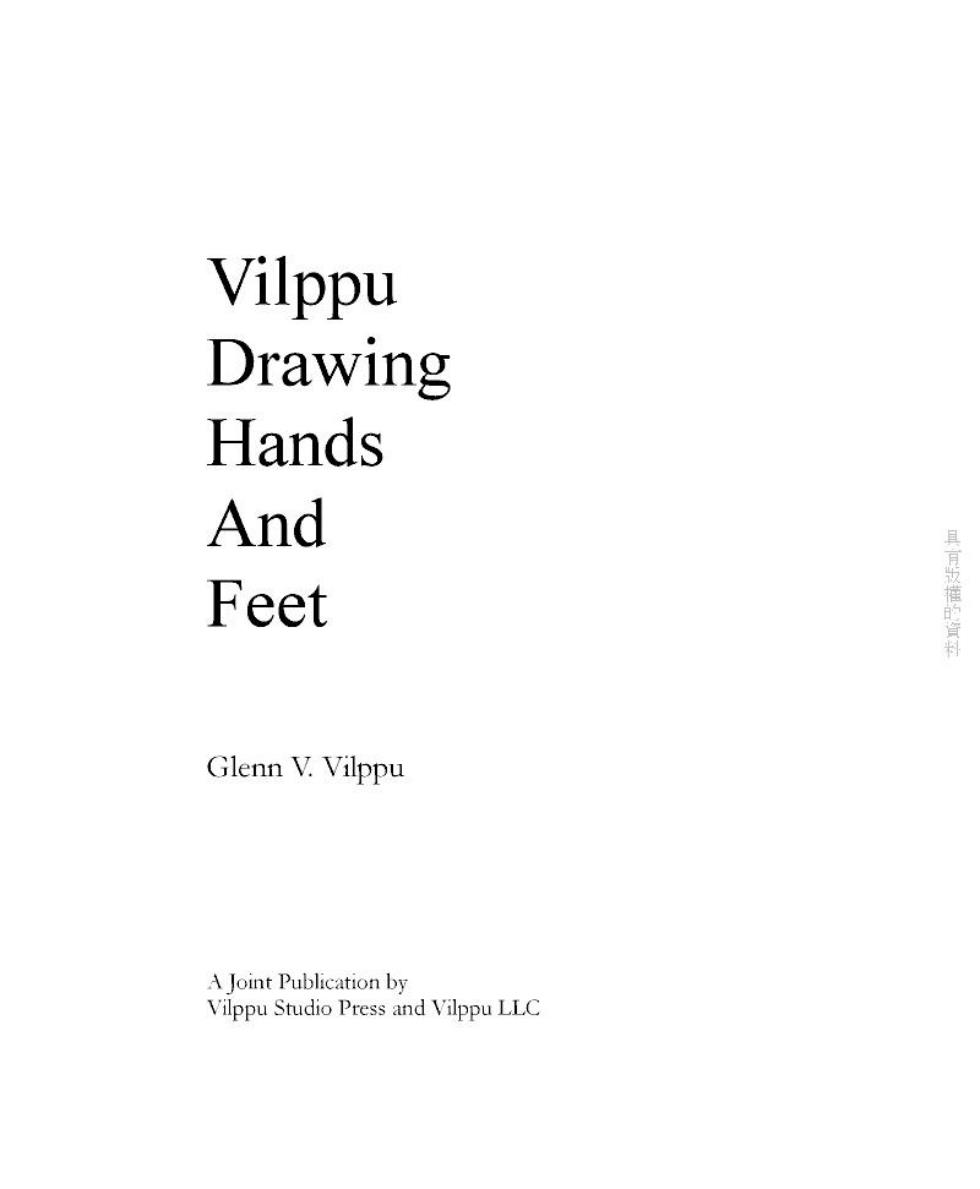
Vilppu Drawing Hands And Feet Glenn V.Vilppu A Joint Publication by Vilppu Studio Press and Vilppu LLC
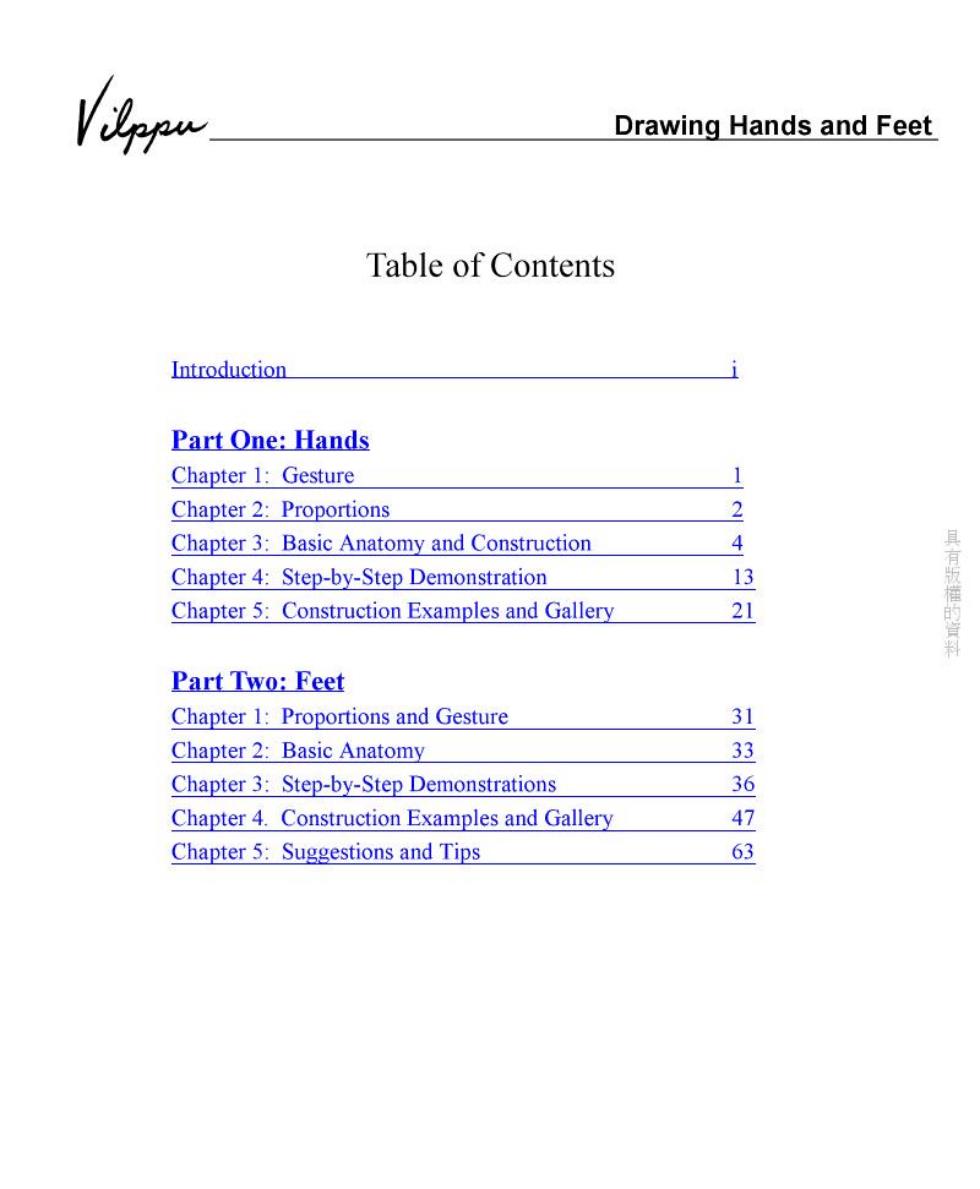
veyow. Drawing Hands and Feet Table of Contents Introduction i Part One: Hands Chapter 1: Gesture 1 Chapter 2: Proportions 2 Chapter 3: Basic Anatomy and Construction 4 Chapter 4: Step-by-Step Demonstration 13 Chapter 5: Construction Examples and Gallery 21 具有版權的資料 Part Two: Feet Chapter 1: Proportions and Gesture 31 Chapter 2: Basic Anatomy 33 Chapter 3: Step-by-Step Demonstrations 36 Chapter 4. Construction Examples and Gallery 47 Chapter 5: Suggestions and Tips 63
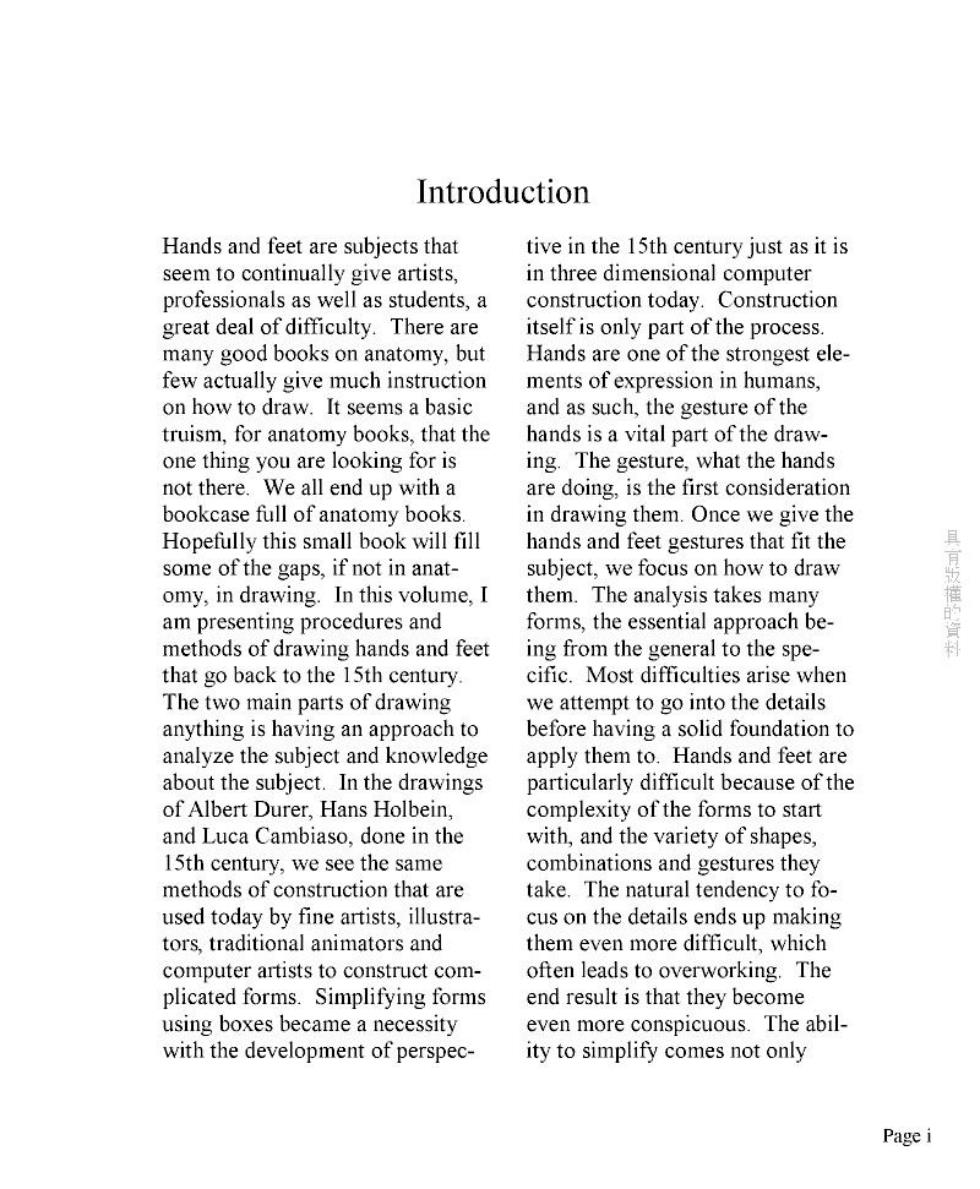
Introduction Hands and feet are subjects that tive in the 15th century just as it is seem to continually give artists, in three dimensional computer professionals as well as students,a construction today.Construction great deal of difficulty.There are itself is only part of the process. many good books on anatomy,but Hands are one of the strongest ele- few actually give much instruction ments of expression in humans, on how to draw.It seems a basic and as such,the gesture of the truism,for anatomy books,that the hands is a vital part of the draw- one thing you are looking for is ing.The gesture,what the hands not there.We all end up with a are doing,is the first consideration bookcase full of anatomy books. in drawing them.Once we give the Hopefully this small book will fill hands and feet gestures that fit the some of the gaps,if not in anat- subiect.we focus on how to draw omy,in drawing.In this volume,I them.The analysis takes many am presenting procedures and forms,the essential approach be 版的资 methods of drawing hands and feet ing from the general to the spe- that go back to the 15th century. cific.Most difficulties arise when The two main parts of drawing we attempt to go into the details anything is having an approach to before having a solid foundation to analyze the subject and knowledge apply them to.Hands and feet are about the subject.In the drawings particularly difficult because of the of Albert Durer,Hans Holbein. complexity of the forms to start and Luca Cambiaso,done in the with,and the variety of shapes, 15th century,we see the same combinations and gestures they methods of construction that are take.The natural tendency to fo- used today by fine artists,illustra- cus on the details ends up making tors,traditional animators and them even more difficult,which computer artists to construct com- often leads to overworking.The plicated forms.Simplifying forms end result is that they become using boxes became a necessity even more conspicuous.The abil- with the development of perspec- ity to simplify comes not only Page i
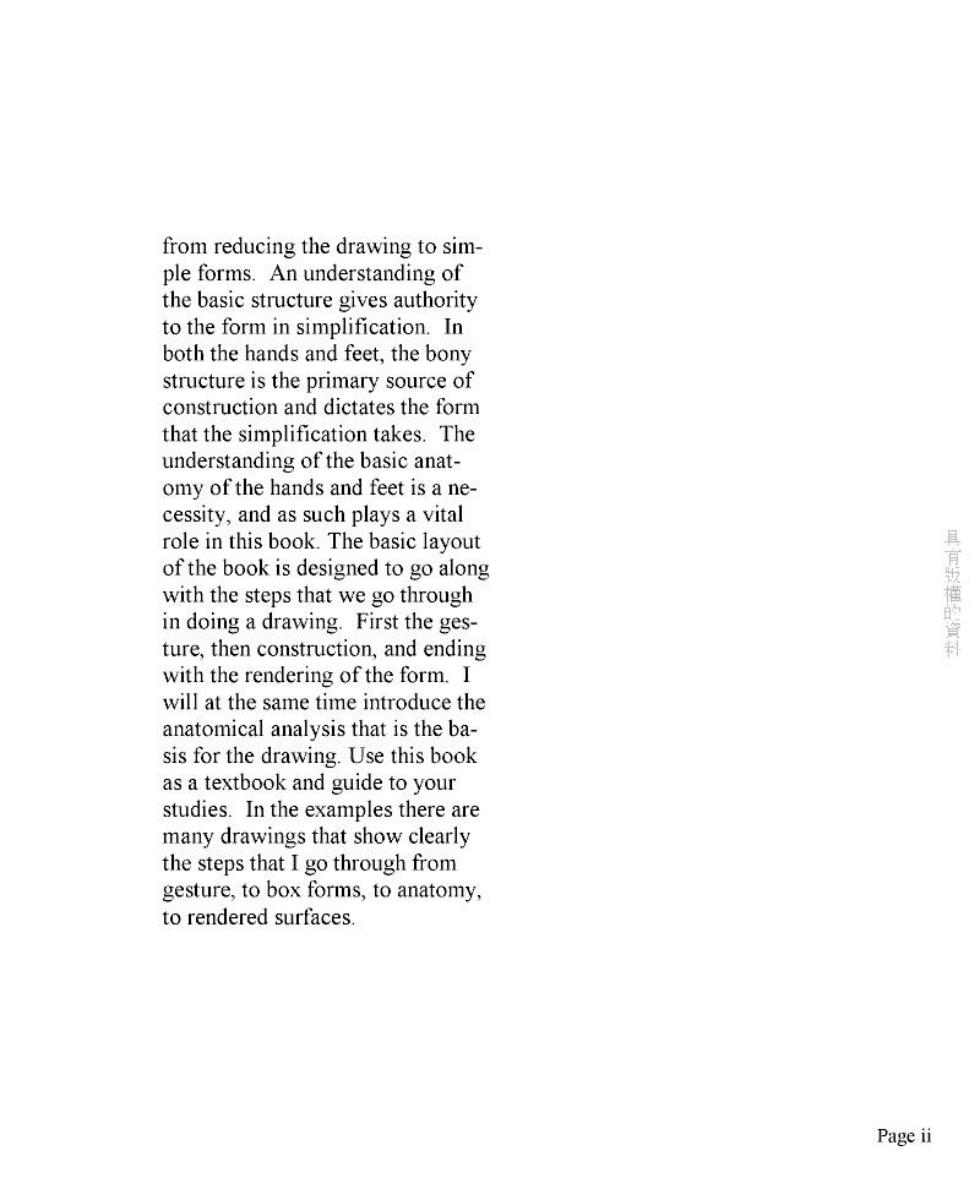
from reducing the drawing to sim- ple forms.An understanding of the basic structure gives authority to the form in simplification.In both the hands and feet,the bony structure is the primary source of construction and dictates the form that the simplification takes.The understanding of the basic anat- omy of the hands and feet is a ne cessity,and as such plays a vital role in this book.The basic layout of the book is designed to go along with the steps that we go through in doing a drawing.First the ges- ture,then construction,and ending with the rendering of the form.I will at the same time introduce the anatomical analysis that is the ba- sis for the drawing.Use this book as a textbook and guide to your studies.In the examples there are many drawings that show clearly the steps that I go through from gesture,to box forms,to anatomy to rendered surfaces. Page ii
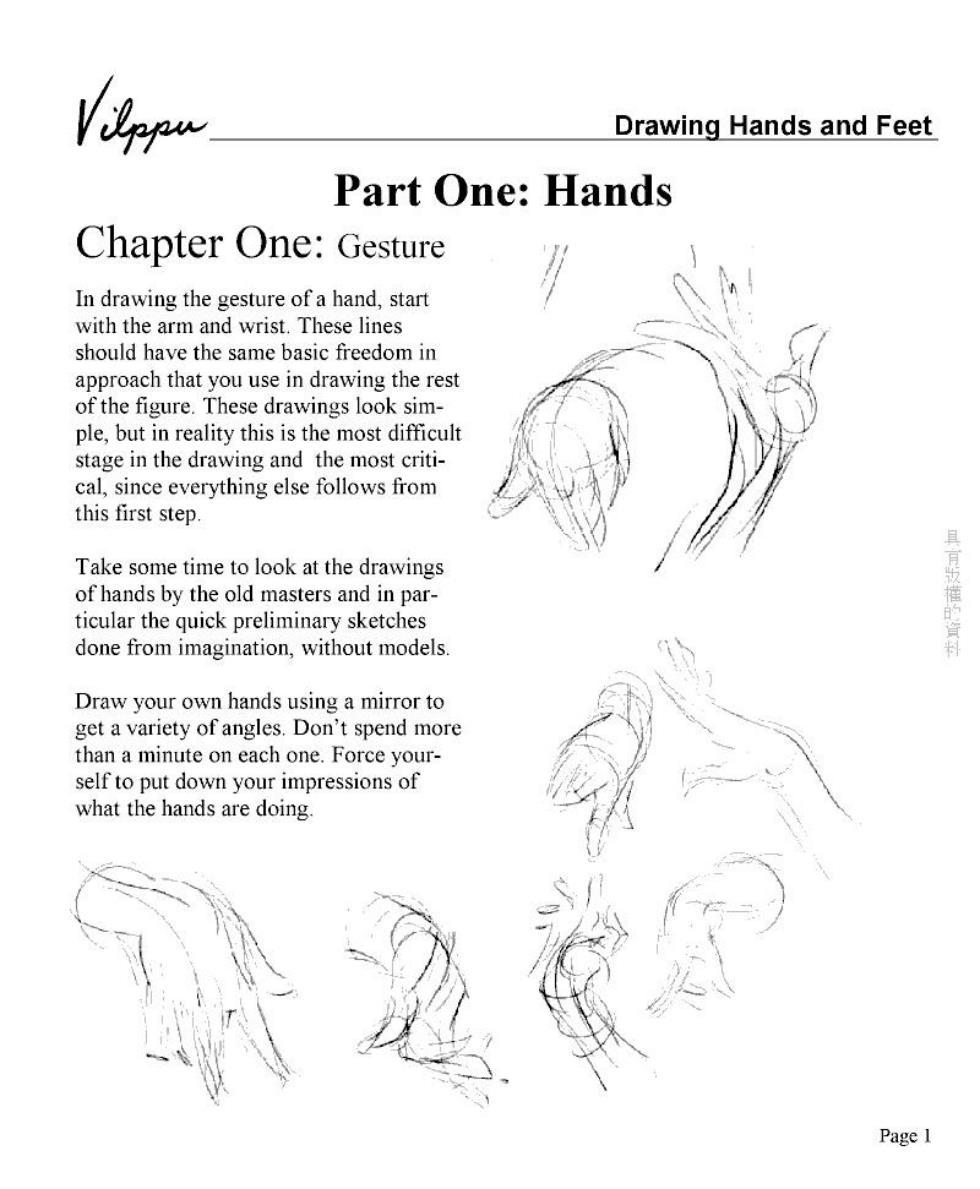
Drawing Hands and Feet Part One:Hands Chapter One:Gesture In drawing the gesture of a hand,start with the arm and wrist.These lines should have the same basic freedom in approach that you use in drawing the rest of the figure.These drawings look sim- ple,but in reality this is the most difficult stage in the drawing and the most criti- cal,since everything else follows from this first step. Take some time to look at the drawings of hands by the old masters and in par- ticular the quick preliminary sketches done from imagination,without models. Draw your own hands using a mirror to get a variety of angles.Don't spend more than a minute on each one.Force your- self to put down your impressions of what the hands are doing. Page 1